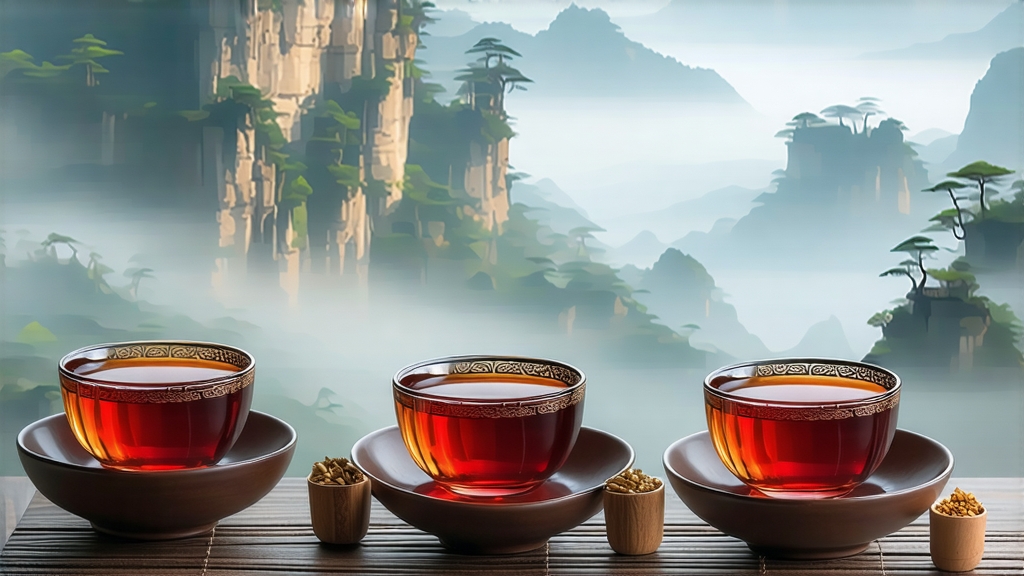
Long before Assam, Ceylon, or Earl Grey entered the lexicon of tea drinkers, a small village in the Wuyi Mountains of northern Fujian Province was already sending fragrant, smoky black leaves down the Nine-Bend River to the port of Xiamen. Those leaves—called Lapsang Souchong—were the first black tea ever documented, and they would change global palates forever. To international traders in the early seventeenth century the tea was simply “Bohea,” a corruption of “Wuyi,” yet its bold, resinous perfume was unmistakable. Dutch merchants carried it to Europe, where it filled the salons of Paris and London with an aroma that evoked both wilderness and luxury. Catherine of Braganza’s dowry chest is said to have contained small tins of Lapsang when she sailed to marry Charles II in 1662, helping to ignite Britain’s century-defining obsession with tea.
Despite its fame abroad, Lapsang Souchong remained a guarded secret at home. Local lore claims the smoke-drying technique was born by accident during the late Ming dynasty, when passing armies forced tea farmers to rush their fresh leaves. To dry the crop before it spoiled, workers improvised with freshly cut pine boughs and open fires. The resulting tea—dark, wine-red in the cup, laced with the scent of pine and longan—proved irresistible to the Dutch, who paid in silver. Thus an emergency measure became an art form, and the first intentionally oxidized, fully fired black tea entered history.
Today the name “Lapsang Souchong” is protected by geographical indication; only leaf picked within the 600–1,200 m core of Tongmu Guan, a narrow gorge carved by the Chongyang Brook, may bear the title. The microclimate is crucial: morning mists rise from the river, shading the tea gardens and slowing photosynthesis, concentrating amino acids and natural sugars. Indigenous small-leaf tea trees—known locally as xiao zhong—thrive in mineral-rich, weathered granite soils. Their spring buds, plucked with one open leaf, are slightly smaller and more resinous than those of neighboring cultivars, an evolutionary response to the cool, resin-saturated air.
Crafting authentic Lapsang Souchong is a choreography of fire, wind, and human judgment. Withering begins on bamboo trays set above riverside huts; cool, humid air softens the leaves for twelve to sixteen hours without excessive moisture loss. Once pliable, the leaves are rolled by hand in small batches, breaking cell walls to invite oxygen. Oxidation proceeds in cedar-lined trays tucked into the upper story of the building, where pine smoke from the ground-floor hearth drifts upward. The smoke is not an afterthought; it is the curing medium. Tea masters select resin-rich Masson pine and Chinese red pine, burning logs under low flame so the wood smolders rather than flares. Aromatic volatiles—guaiacol, syringol, creosol—bind to the leaf surfaces, while enzymes convert catechins into theaflavins and thearubigins, painting the liquor a luminous mahogany.
The final stage is the pinewood basket fire, unique among black teas. Rolled leaves are spread in rattan sieves suspended one meter above charcoal embers. Here the tea master’s face becomes his thermometer: he gauges heat by the distance he can comfortably hold his cheek from the coals. Over four to six hours he rakes ashes, adds powdered pine bark, and flips the leaves every twenty minutes so that each strand absorbs smoke evenly without scorching. When finished, the leaves glisten with a deep ebony sheen and exude a scent that marries dried longan, pipe tobacco, and the sweet resin of a summer campfire.
Western supermarkets often sell “Lapsang” flavored with artificial liquid smoke, a harsh, tarry caricature. True Tongmu Lapsang Souchong is surprisingly subtle: the smoke is a bass note beneath layers of honeyed malt, dried plum, and Wuyi mineral tang. The highest grade, called “unsmoked” or “wild” Lapsang, is processed entirely without direct fire; instead, the leaf is withered over natural convection in the same rooms where pine was burned the previous season, absorbing only ambient memory. Purists prize this version for its silky texture and lingering cocoa finish